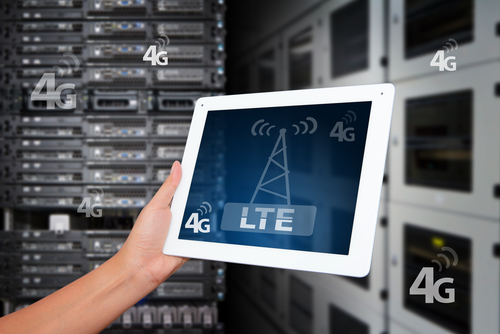Right now, it is anybody’s guess whether Long Term Evolution, clearly seen by AT&T and Verizon as viable platforms for rural broadband service, will achieve major market share, or not. For starters, the facilities and marketing programs are not fully in place.
Since major U.S. Long Term Evolution networks are still under construction in the United States, and since those builds naturally will occur in areas with the greatest amount of potential customers first, LTE generally will be a market reality in major and bigger market areas.
But that will change in 2013 and 2014, as substantial 4G LTE coverage becomes available in many rural areas.
So the question is whether the service, and the retail packaging, can be adapted to fit the actual end user demands “most” potential buyers will have. It seems clear that LTE will not be a viable choice for some users, especially those who watch lots of online video.

Image via Shutterstock
But just how far LTE, as currently packaged, becomes a viable commercial substitute for fixed broadband connections, is the big issue. Probably more important is whether some future changes in retail tariffs will be made that can increase the range of customers who might logically choose LTE in place of a fixed connection.
Some will argue the potential substitution opportunities are limited, and there are reasons for that view.
With some exceptions, the actual percentage of broadband users in developed markets who already use mobile broadband exclusively, in place of a fixed connection, is rather limited. A 2011 study by Ofcom, the United Kingdom communications regulator, suggests that single-digit percentages of users already are doing so, the exceptions being Italy and Austria.
In Austria, perhaps 19 percent of respondents to surveys say they are “mobile only,” while in Italy about 14 percent report using only mobile broadband. In Germany, the percentage was about nine percent, while in the United States the percentage of mobile only users was about six percent.
Still, those 3G figures suggest mobile executives are not wrong to think there is a substantial market for LTE broadband. The issue is how much demand, and what types of customers will be most receptive.
We can be sure that people who stream a lot of Netflix videos will not be the most logical candidates. But, that still leaves quite a lot of users for whom LTE might work. The key variables are of course typical monthly consumption and number of users on any single account.
Per person usage might range between two gigabytes a month up to about seven gigabytes a month. So a single-person account might find LTE a plausible alternative, especially at the lower ranges of usage.
A multi-person household will have a much more difficult time making the data caps and prices work.
The most logical candidates are consumers who already rely on smartphones, understand how to use the Wi-Fi hotspot feature, are single-user accounts at the mean, or below, in terms of consumption. The most challenging use cases will be moderate online video consumers.
Heavy online video users will find the substitution opportunities very challenging, though.
But the wild card will be tariffs. If mobile operators figure out a way to offer a “fixed” alternative tariff, offering more bandwidth, but only usable within a local area, with some way to support mobile usage out of that area on a more-typical “mobile” tariff, demand could be quite substantial.
Edited by
Brooke Neuman  QUICK LINKS
QUICK LINKS